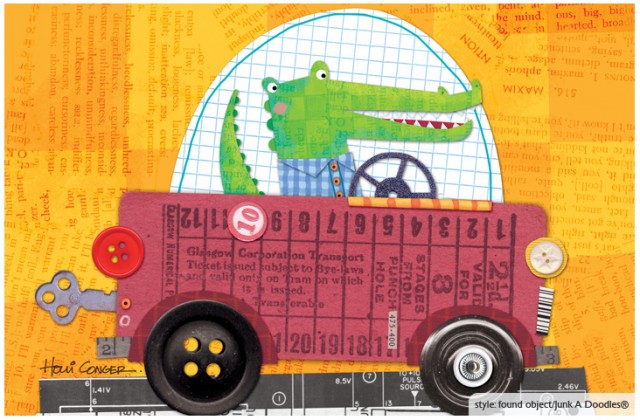This article has been contributed by Sarah Bay.
Many website owners rely on stock photographs, and while this is the standard method, it’s not necessarily the best.

Those stock images will cost you – especially if the nature of your license requires you to pay for each individual image, or even for each page visit that features the image. An annual license is a more cost effective method, but there are other ways to acquire top notch imagery for your website.
- Get 10 Free Stock Images from Adobe Stock — Royalty-free photos, illustrations and videos
In this post, we look at the best alternatives to stock imagery.
Also see this ultimate guide to imagery here.
10+ Best Alternatives to Stock Imagery
1. DIY Photography
Since most phones have a high quality camera built into them, you can turn into an amateur snapper, and begin to collect images yourself as you’re out and about, and ask friends and family member to do the same. It might not be possible to take photographs that pertain exactly to the subject matter, but anything in a related field can be utilized.
2. Infographic
Rather than a photo, you can design a unique infographic for your site. A good infographic contains imagery and text, combined to convey a message in a visually memorable and effective manner. You can have a crack at designing one yourself, but it’s usually better to employ a graphic designer and retain the copyright on the image.
3. Images Without Copyright
Photo sharing websites are a visual treasure trove, and there’s no reason why you can’t use this to your advantage. Visit a site such as Flickr, and search for images covered by an Attribution License, which are free to download and use, so long as you credit the creator of the image.
4. Contract a Student Illustrator
If you’re on a budget, you can inexpensively and easily obtain original illustrations for your page. You might want to advertise for student graphic designers at your local college, who will be able to do high quality work for a minimal fee – they might well be happy for the professional experience. Be careful of your legal obligations, since you do need to pay the minimum wage.
5. Contract an Offshore Illustrator
Websites such as Upwork (formerly Elance and Odesk) allow for the easy sourcing of high quality contract workers, and depending on their location, they can undertake the work for a fraction of the cost of a local contractor. You don’t need to fly blind – select an online contractor with a portfolio and a high quality rating from their previous assignments.

6. Free Image Libraries
Yes, the majority of images on these sites are stock photos, but the great thing is that they’re all free! You can find a list of some of the best sites here, but each site and image has restrictions on the context they can be used on, so read the terms and conditions carefully. Also see stock photos that don’t suck.
7. Doing Without Images
Consider a website overhaul to something that follows the tenets of Flat Design, which has minimal imagery and is based on the strength of its simplistic, straightforward design, using block colors and a segmented layout. You will still need imagery or icons for some sections of your site, but this will at least reduce the number, and therefore, will reduce your cost.
8. Videos, Not Photos
Rather than use a photo, imbed a YouTube video instead. You’re better off selecting relevant videos that have been on the site for a while, since it means they’re infinitely less likely to have any copyright issues. Watching a clever, funny, and yet apt video also means that browsers will spend more time on your site.
9. Top Quality Stock Photos for Free
Getty Images is perhaps the world’s foremost provider of photography for online and print media, with a price tag to match. It seems they’re in a giving mood, since they’ve released 35 million stock photos to use for free. The catch is that the images can be used for non-commercial purposes only, and as such, can only be used if you’re running a charity or a blog that has not yet been monetized. See the below image for a live example of this.
10. DIY Drawing or Illustration
If you can draw a reasonable picture yourself, then consider creating something for your own website. You don’t want it to be amateur, so if your scribbling skills aren’t up to scratch, then consider running it through Photoshop or a comparable program in order to “fancy it up” to make sure it doesn’t look like something your parents put on the fridge when you were five years old.
11. Bonus: Free High Quality Stock Photography Sites
If you really need to use stock photography, here are a few of the best free stock photography sites out there.
- Adobe Stock (Get 10 Adobe Stock images free)
- Deposit Photos
- Unsplash
- Picjumbo
- The Pattern Library
- Gratisography
- Getrefe
- Death to the Stock Photo
- New Old Stock
- Superfamous (with attribution)
- Little Visuals
- Good Free Photos
- Stockio.com
- Burst by Shopify
- 43+ more free stock photos
Have any other stock photography alternatives to share?



Nice article.
In regards to the Getty free images offer, keep in mind that Getty also can, at any time, embed their own ads to the images you use without the need of your approval.
Ah yes, good point about that. Thanks for the heads up Andrew.
This is My initial time visited here. i suppose I’m not the sole one having all the enjoyment here! carry on the great work.
nice post,thanks for great list.
Nice article, I used to photograph all the photos on my blog so i didn’t need to buy photos from stock sites. I also do some infographics on my own, that’s the best solution for me.
Interesting article.
Recommending outsourcing work may be a double edged sword. While it may be ok for you to recommend Elance or Odesk for adding pictures to your site, your readers may find that they likewise can get cheap branding and other design there without knowing the difference…
Thanks for this! Other free stock sites are: http://www.sitebuilderreport.com/stock-up and http://www.pexels.com/. They combine all best free stock photography sites into one searchable site. These two resources have saved me so much time.
P.S. I would like to know your thoughts on Sabine’s comment. I tend to somewhat agree.
Sabine and Nora,
I think there is a marketplace for all types of design but you have to be smart about it. Checking references, past projects, their portfolio and price are all good indicators of the quality you will get. But you are right, some may not be able to distinguish the difference.
Thanks for the other links Nora.
Just thought that you’d be interested into having a look at our free high resolution stock photography web site:
http://www.freemagebank.com
I hope you like it and thanks in advance for sending in your feedback!
With companies like Getty (and more everyday) demanding big bucks for copyright violations, creatives and our clients need to be more careful than ever before. I would never recommend Getty as an option simply because they are causing great harm to creatives overall in the name of protecting us. I’m not talking about them going after people who knowingly violated copyright law – I’m talking about going after minor violations and situations in which people had no clue they were violating anyone’s rights and were never given a chance to rectify the situation without paying more than the cost of licensing the image.
For this reason, I don’t recommend using “free” photo sites unless you have (and keep for your records) a license that gives you permission to use the image. A lot of those “free” images are either currently being sold on stock sites or will in the future, leaving you in a bad situation if you can’t prove that you have the right to use it. If you’re going to buy licenses from a stock photo site, make sure it isn’t a predatory company and read the actual license terms so that you know for sure that you are using it within the license allowances. I also check Google Images to see where an image is being used before I buy a license or use an image.
DIY, going without, and making infographics and other visuals to avoid using images… all solid ideas whenever the situation allows. Another option is to pair up with a photographer and trade images for whatever services you can offer. I’m a designer, so maybe I pair up with a local photographer who wants a strong brand and updated collateral. Just make sure the photographer gets model and property releases and that you get a license for each image!
Using student artists can be problematic because people so severely devalue their work. It isn’t ok to take advantage of students unfairly. If you’re going to use a student, be willing to pay a fair amount – less than you would pay for an experienced professional, but not so little that it’s disrespectful of their time and skills. Negotiate with them with the desire to come to a compromise that is fair for both of you, not just with the goal of getting work for as cheap as possible. Ask to look at their work just like you would any professional. It isn’t worth it for either of you if they don’t have the skills to do what you need.
I have mixed feelings about outsourcing. Yes, it’s a way to get creative work for less. However, it also takes work away from people in your home country. When we don’t invest in our workers, we all suffer. At the same time, the people who are typically cheap enough to do this are problematic clients anyway and many of us avoid them. Again, mixed feelings.
Thanks for share. https://plixs.com it’s also a great site for free public domain images.
I am puzzled at the emphasis in this article towards either not paying for design and art services or paying as little as possible. A business person starting a business needs a professional website. The business person intends, I assume, to be paid for their work and to at least attempt to make a living from this business. So why is it assumed that all the artwork and design that positions the business to do this, to be “professional” should be basically “free?”
Design and art at a professional level deserves to be paid for. Articles like this seem to be part of a cultural and economic trend to devalue all creative work and amateurize the skills that take years and perseverance to hone, not to mention vision and talent.